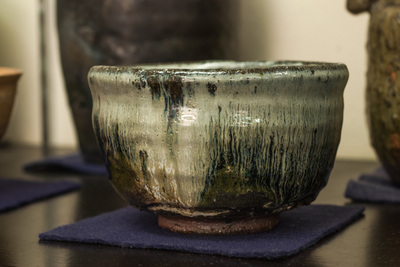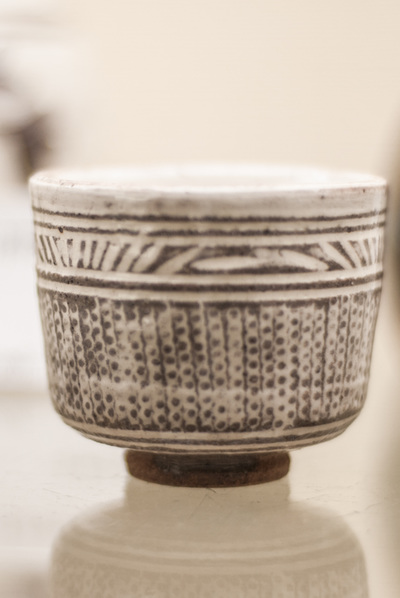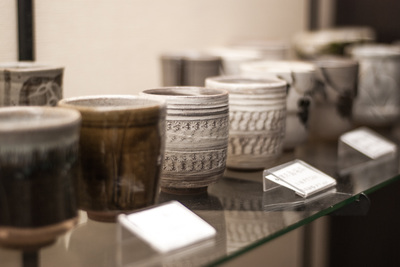| | When I talk to Japanese about pottery, they often ask me if I know about Arita-yaki. But not far from Arita in Saga prefecture, is also Karatsu. Even though these two cities are quite close (about 40kilometres), the pottery style is completely different. Karatsu is a small city that used to be a very important port town for trading with China and Korea. Karatsu pottery first started under the influence of Korean potters in the 16th century. There are a few different categories for each style, all of them quite irregular or imperfect. It is made with stoneware, decorated with glazes or sometimes with iron oxides. Each piece is very unique and the textures are stunning. The freehand drawings are delicate and it seem like they dance on the pieces. Even though Karatsu pottery declined after the Meiji era while porcelain was rising, it was revived by Nakazato Muan (12th Generation of the Nakazato family) in the 20th century. Now, there are about 70 working potters in Karatsu. Wandering in the small streets of Karatsu, one can find many small galleries. While most of them have decently priced items, they also often have really pricey pieces. It was not unusual to see a tea bowl over 100,000¥ (about 900$). Karatsu pottery was prized by tea masters for the tea ceremony, which might explain why the prices go over the roof for some items. When it comes to tea ceremony, it is one of the most sought-after style. As the old saying says: "First Raku, second Hagi, third Karatsu." |
The Nakazato Taroemon is one of the most notable galleries in Karatsu. This family has been making ceramics for 14 generations, which take us back to the 17th century. They produced ceramics mostly for the lords of Karatsu Castle who patronized the family. In the gallery in Karatsu, there are two exhibition rooms, one with work from the previous generations, the other one with newer work. The shapes are non-symmetrical and altered, which makes them really interesting to look at. The glazes have rich textures and colours. You can look at a piece from a thousand of different angles and always see something different. It is full of surprises, and feels like you could never get bored of using such pieces.
Not too far from this gallery is an old official kiln with 7 chambers, the Ochawangama. Even though it is now covered in grass we can still clearly see each chamber and the openings on the side.
There are many galleries and kilns to be visited around Karatsu and I recommend you get a map at the information centre if you decide to visit there. It is a great trip for anyone interested in tea ceremony, ceramics or wabi-sabi!
To learn more about Nakazato family, I recommend this detailed article by the Japan Times.
Not too far from this gallery is an old official kiln with 7 chambers, the Ochawangama. Even though it is now covered in grass we can still clearly see each chamber and the openings on the side.
There are many galleries and kilns to be visited around Karatsu and I recommend you get a map at the information centre if you decide to visit there. It is a great trip for anyone interested in tea ceremony, ceramics or wabi-sabi!
To learn more about Nakazato family, I recommend this detailed article by the Japan Times.




